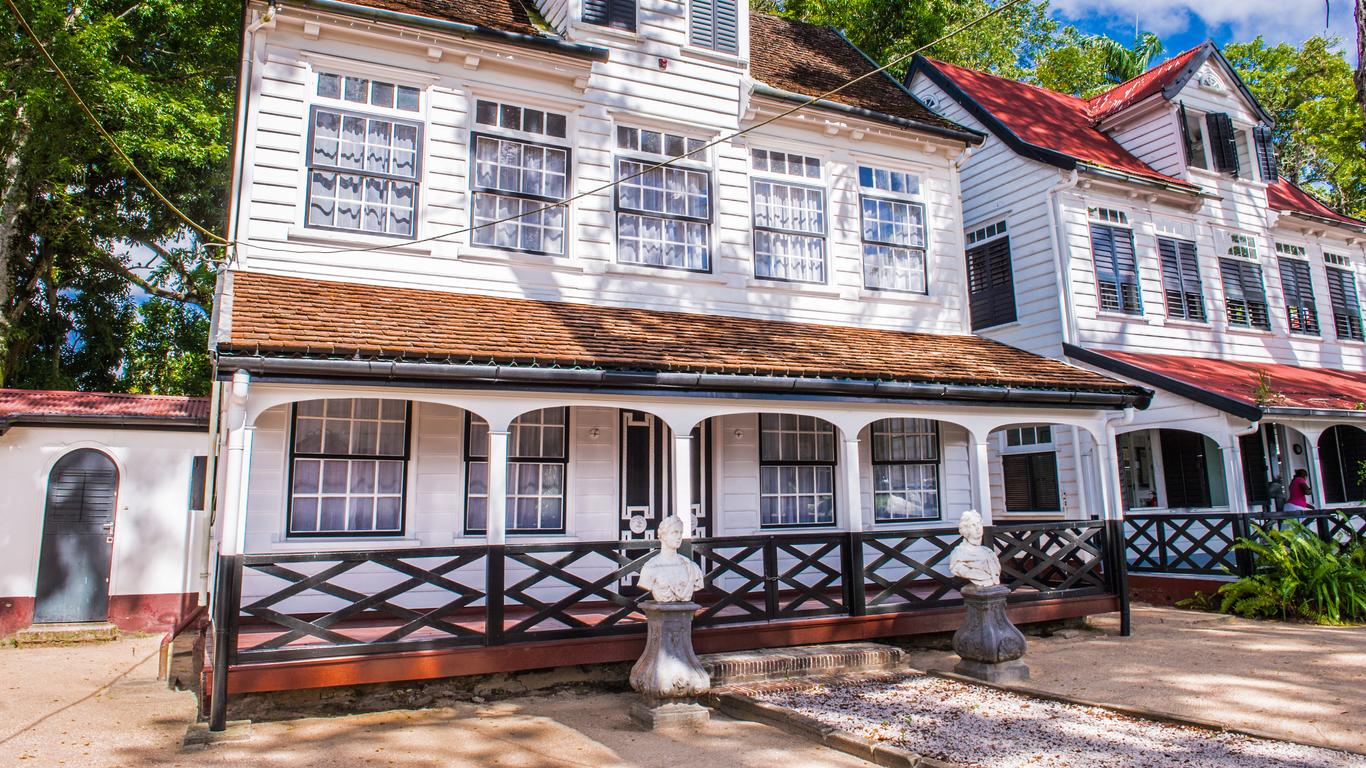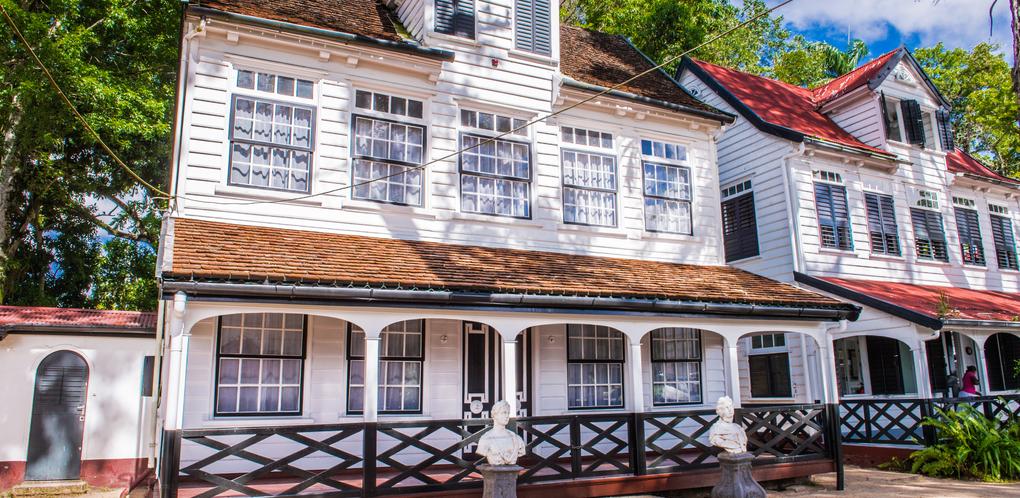
Suriname travel guide
Suriname Tourism | Suriname Guide
You're Going to Love Suriname
Also known as Dutch Guiana, Suriname is a true ethnic melting pot with established cultures that live in harmony and a population that loves to party.

What to do in Suriname
1. Walk the Streets of Paramaribo
The capital's architecture recalls Dutch colonialism with American influences and some Creole elements. While there, make sure to visit the St Peter and Paul cathedral and the waterfront, which is a UNESCO Heritage site.
2. Travel Down the Upper Suriname River
Whether canoeing, walking along or swimming down the river, this experience is a must for its peacefulness. Villages of the Saramaka people are built on either side of the river among jungle greenery and are a magical sight.
3. Hike Up Voltzberg Mountain
This 4h hike to the top of this granite mountain is a true delight. On the way up, encounter local wildlife such as monkeys and birdlife. Once arrived, be rewarded with views of greenery as far as the eye can see.
4. Visit the Turtle Sanctuary at the Galibi Nature Reserve
Visit the sanctuary to see a variety of native giant turtles, such as the green turtle, leatherback, Hawksbill and Olive Ridley, the last two being a rare sight. The green turtles nest between February and May, while leatherbacks are likely to appear between April and July.
5. Sample Local Rum
Head to the Suriname Rum House to learn how local rum is made, participate in a tasting session and maybe even a mixology class.
When to visit Suriname
The best time to visit Suriname is during its dry months, which are in February, March, and from August to November.
How to Get to Suriname
Entry requirements
Citizens from around 40 countries, including some South American and Caribbean countries, can enter Suriname without a visa. Citizens of other countries need a visa, some of which can get it on arrival. The visa given is usually a single entry visa, so travelers needing a multiple entry visa need to specify this.
Plane
The main international airport in Suriname is Johan Adolf Pengel International Airport, which is located next to Paramaribo. A daily connection is available to the Netherlands, with other regular flights connecting Suriname with neighbouring countries and the USA.
Bus
While there are no direct bus connections between Suriname and its neighbouring countries, buses from Georgetown in Guyana and from Cayenne in French Guiana travel to the bordering towns of Suriname. Small ferries are then available across the bordering rivers.
Boat
Regular ferries are available between St. Laurent in French Guiana and Albina in Suriname, and the price to cross is around 20 SRD (2.70 USD) per person. On the Guyana side, catch the ferry from Moleson Creek heading to South Drain in Suriname, with the trip taking about 30min.
Popular airports in Suriname
Popular airlines serving Suriname
Where to stay in Suriname
Hotels for various budgets are located in the main cities in Suriname. In the rural areas and parks, it is possible to find eco-lodges and jungle lodges.
Where to stay in popular areas of Suriname
How to Get Around Suriname
Public Transportation
Buses are the main mode of local public transport in Suriname, and while many of them are privately owned, they still followed determined routes. Shared taxis are also available and are faster than buses; however, make sure to agree on a price before getting in.
Bus
For long distance travel, bus types include government buses, which are the more economical option, private minibuses, which only leave for their destination once full, and minibuses that are more of a taxi service and pick up customers from their hotel.
Car
Travelers need to have an International Drivers Permit for driving in Suriname. Those planning to head inland are advised to rent a 4x4 as they might encounter dirt roads along the way.
Plane
Gumair and Bluewing Airlines are the two local airlines that provide travel to the country's 12 airports. Flights usually fly in and out of Paramaribo.
The Cost of Living in Suriname
If eating out in Suriname, expect to pay about 30 SRD (4 USD) for an inexpensive meal and around 150 SRD (20 USD) at a mid range restaurant. Local bus transport costs around 2 SRD (0.25 USD) for a one-way trip, while a gallon of gasoline costs around 25 SRD (3.50 USD). Credit cards are accepted in some of the major hotels and establishments.